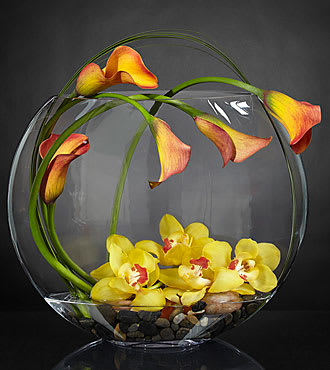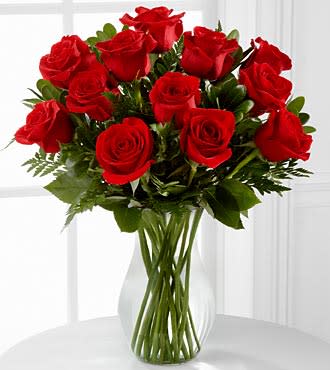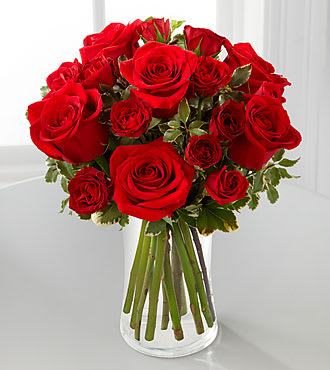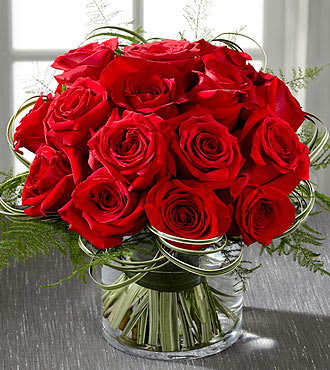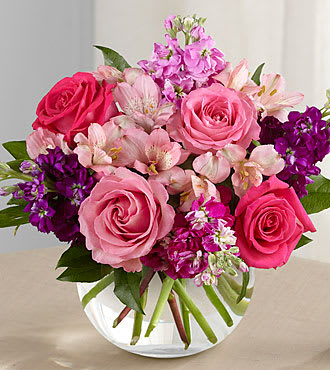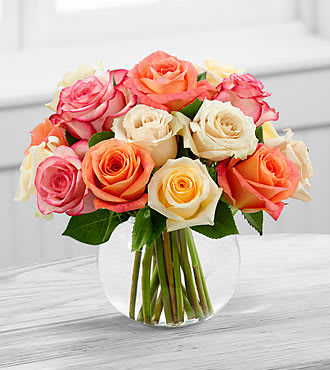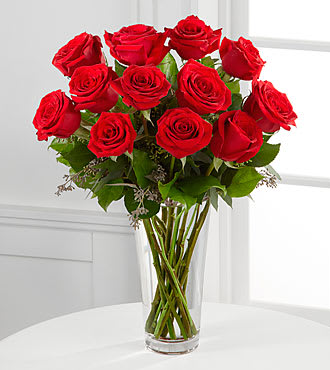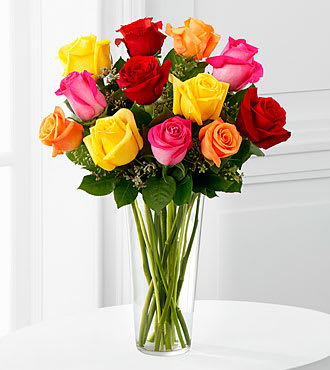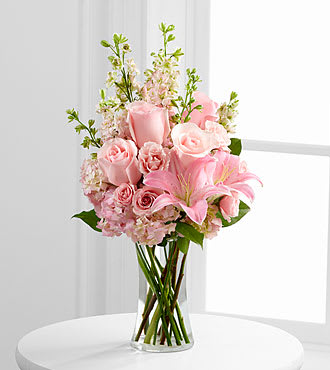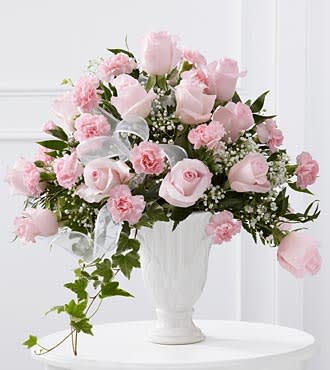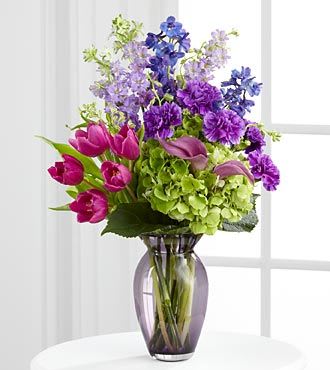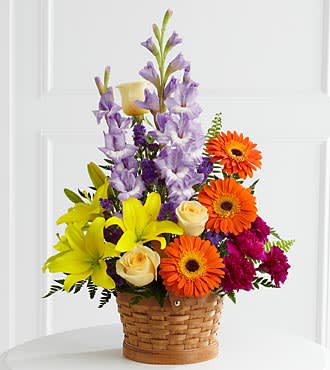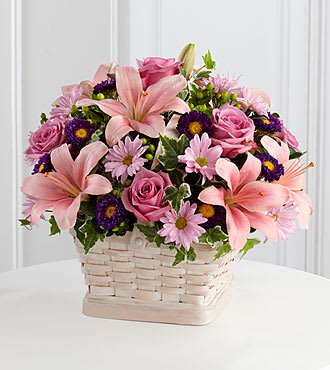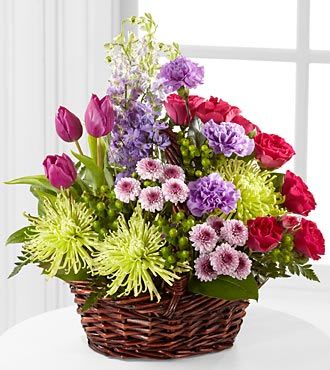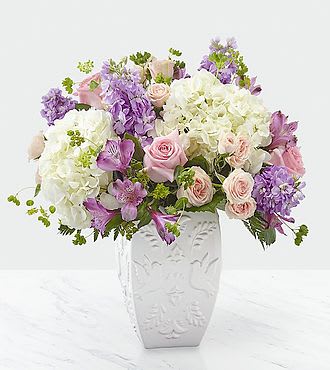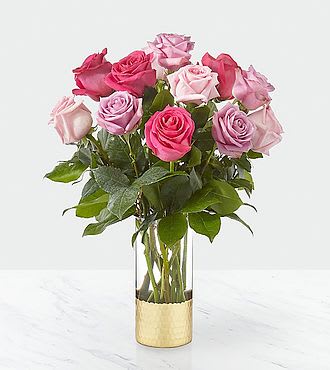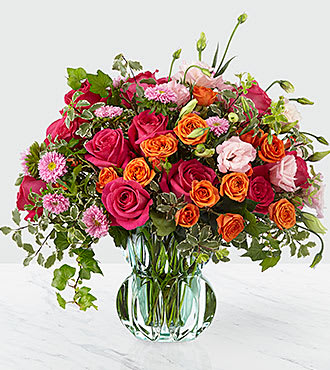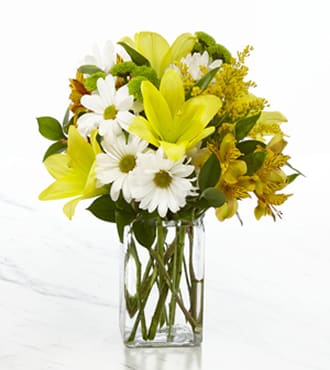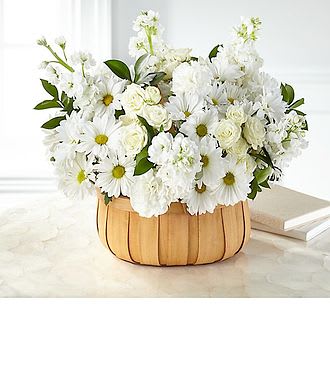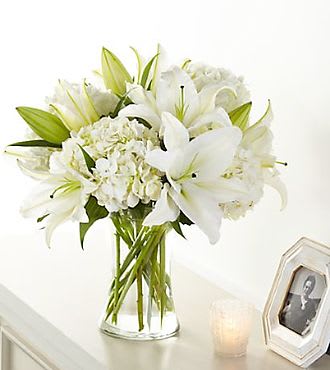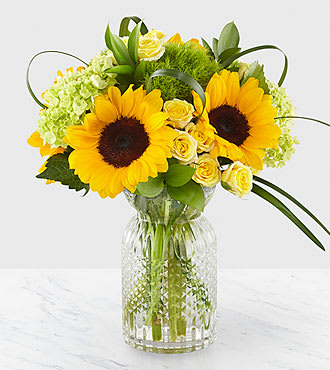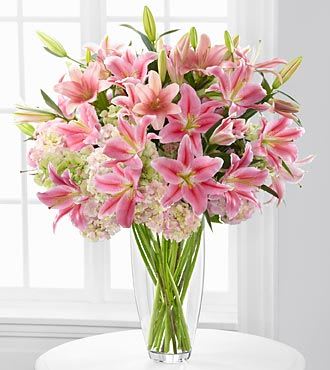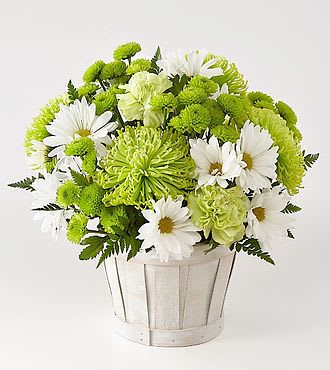- Love & Romance
- Best Sellers
- Vased
- $97.90
- $44.90
- $89.90
- $89.90
- $87.90
- $97.90
- $79.90
- $69.90
- $49.90
- $49.90
June 1, 2025
Second Mesa June Floral Selection
The Bloom Central flower delivery of the month for June in Second Mesa is the Alluring Elegance Bouquet
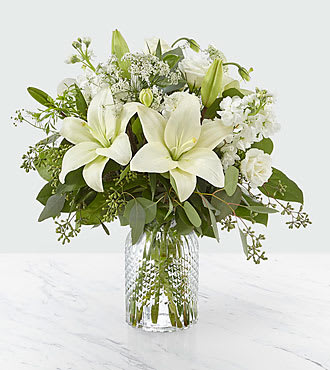
The Alluring Elegance Bouquet from Bloom Central is sure to captivate and delight. The arrangement's graceful blooms and exquisite design bring a touch of elegance to any space.
The Alluring Elegance Bouquet is a striking array of ivory and green. Handcrafted using Asiatic lilies interwoven with white Veronica, white stock, Queen Anne's lace, silver dollar eucalyptus and seeded eucalyptus.
One thing that sets this bouquet apart is its versatility. This arrangement has timeless appeal which makes it suitable for birthdays, anniversaries, as a house warming gift or even just because moments.
Not only does the Alluring Elegance Bouquet look amazing but it also smells divine! The combination of the lilies and eucalyptus create an irresistible aroma that fills the room with freshness and joy.
Overall, if you're searching for something elegant yet simple; sophisticated yet approachable look no further than the Alluring Elegance Bouquet from Bloom Central. Its captivating beauty will leave everyone breathless while bringing warmth into their hearts.
Second Mesa Florist
Looking for flower delivery?
We have beautiful floral arrangements and lively green plants that make the perfect gift for an anniversary, birthday, holiday or just to say I'm thinking about you. We can make a flower delivery to anywhere in Second Mesa AZ including hospitals, businesses, private homes, places of worship or public venues. Orders may be placed up to a month in advance or as late 1PM on the delivery date if you've procrastinated just a bit.
Two of our most popular floral arrangements are the Stunning Beauty Bouquet (which includes stargazer lilies, purple lisianthus, purple matsumoto asters, red roses, lavender carnations and red Peruvian lilies) and the Simply Sweet Bouquet (which includes yellow roses, lavender daisy chrysanthemums, pink asiatic lilies and light yellow miniature carnations). Either of these or any of our dozens of other special selections can be ready and delivered by your local Second Mesa florist today!
Second Mesa Church Flower Delivery
Name the occasion and a fresh, fragrant floral arrangement will make it more personal and special. We hand deliver fresh flower arrangements to all Second Mesa churches including:
Bacavi Community Church
State Highway 264
Second Mesa, AZ 86043
Sunlight Baptist Mission
Mission Road
Second Mesa, AZ 86043
Why We Love Lilies
Lilies don’t simply bloom—they perform. One day, the bud is a closed fist, tight and secretive. The next, it’s a firework frozen mid-explosion, petals peeling back with theatrical flair, revealing filaments that curve like question marks, anthers dusted in pollen so thick it stains your fingertips. Other flowers whisper. Lilies ... they announce.
Their scale is all wrong, and that’s what makes them perfect. A single stem can dominate a room, not through aggression but sheer presence. The flowers are too large, the stems too tall, the leaves too glossy. Put them in an arrangement, and everything else becomes a supporting actor. Pair them with something delicate—baby’s breath, say, or ferns—and the contrast feels intentional, like a mountain towering over a meadow. Or embrace the drama: cluster lilies alone in a tall vase, stems staggered at different heights, and suddenly you’ve created a skyline.
The scent is its own phenomenon. Not all lilies have it, but the ones that do don’t bother with subtlety. It’s a fragrance that doesn’t drift so much as march, filling the air with something between spice and sugar. One stem can colonize an entire house, turning hallways into olfactory events. Some people find it overwhelming. Those people are missing the point. A lily’s scent isn’t background noise. It’s the main attraction.
Then there’s the longevity. Most cut flowers surrender after a week, petals drooping in defeat. Lilies? They persist. Buds open in sequence, each flower taking its turn, stretching the performance over days. Even as the first blooms fade, new ones emerge, ensuring the arrangement never feels static. It’s a slow-motion ballet, a lesson in patience and payoff.
And the colors. White lilies aren’t just white—they’re luminous, as if lit from within. The orange ones burn like embers. Pink lilies blush, gradients shifting from stem to tip, while the deep red varieties seem to absorb light, turning velvety in shadow. Mix them, and the effect is symphonic, a chromatic argument where every shade wins.
The pollen is a hazard, sure. Those rust-colored grains cling to fabric, skin, tabletops, leaving traces like tiny accusations. But that’s part of the deal. Lilies aren’t meant to be tidy. They’re meant to be vivid, excessive, unignorable. Pluck the anthers if you must, but know you’re dulling the spectacle.
When they finally wilt, they do it with dignity. Petals curl inward, retreating rather than collapsing, as if the flower is bowing out gracefully after a standing ovation. Even then, they’re photogenic, their decay more like a slow exhale than a collapse.
So yes, you could choose flowers that behave, that stay where you put them, that don’t shed or dominate or demand. But why would you? Lilies don’t decorate. They transform. An arrangement with lilies isn’t just a collection of plants in water. It’s an event.
More About Second Mesa
Are looking for a Second Mesa florist because you are not local to the area? If so, here is a brief travelogue of what Second Mesa has to offer. Who knows, perhaps you'll be intrigued enough to come visit soon, partake in some of the fun activities Second Mesa has to offer and deliver flowers to your loved one in person!
Approaching Second Mesa, Arizona, you first notice the way the land itself seems to fold into abstraction, a high desert plateau ribbed with shadows, its edges dissolving into the kind of blue that makes you question whether the sky starts above or bleeds up from the ground. The air here is thin and bright, the sunlight sharp enough to carve contours into the red-rock cliffs. You drive a road that curls like a question mark, and the dust your tires kick up hangs behind you like an answer. This is the Hopi Reservation, a place where time does not so much pass as accumulate, layer upon layer, like the strata of sandstone that hold the bones of ancestors and the footprints of children chasing lizards through the midday heat.
Life on Second Mesa is lived in the active voice. Women shape clay into pots with hands that know the weight of centuries. Men tend cornfields where the plants grow stubborn from the earth, roots clawing into soil so dry it seems to defy the very logic of growth. Children sprint between adobe homes, their laughter echoing off walls built by generations who understood that a home is not just a shelter but a covenant with the land. The mesa’s villages, Shungopavi, Mishongnovi, Sipaulovi, cling to the rock as if they were born from it, which, in a way, they were. To walk these streets is to move through a continuum. An elder weaving a basket on a porch might glance up, and in her eyes you see the same flicker of focus that animated her grandmother’s hands, and her grandmother’s before that.

Same day service available. Order your Second Mesa floral delivery and surprise someone today!
The Hopi Cultural Center sits near the mesa’s crest, its parking lot dotted with cars and pickup trucks, its patio often full of visitors sipping coffee while locals discuss the price of mutton or the progress of a nephew’s knee healing after a ceremonial dance. Inside, the smell of fry bread and piki, a delicate blue cornpaper thin as a membrane, mingles with the scent of juniper smoke from the fireplace. Conversations here are not small talk. They orbit around weather, crops, the intricate logistics of ceremonies that map the year like constellations. Outsiders are welcome but exist in a kind of respectful parallax, observers of a rhythm they can sense but not wholly parse.
To the west, the land drops away into a vastness that makes your breath hitch. The Hopi call this space the koyaanisqatsi, a life out of balance, but from here it looks like a cathedral, sunset painting the desert in strokes of ochre and violet, the shadows of clouds moving across the valleys like silent hymns. It is easy to romanticize. Do not romanticize. The people here are pragmatic. They laugh when tourists call the mesa “timeless,” because they know better than anyone that time is both relentless and kind, a force that demands adaptation even as it insists on memory. The old stories are not nostalgia; they are manuals. A kachina dancer’s mask is not a costume but a bridge.
In the village of Walpi, accessible only by foot along a path worn smooth by moccasins and boots, the houses seem to grow organically from the rock. A artist in his thirties, face shielded from the sun by a wide-brimmed hat, sketches the landscape on a notepad. He is capturing the slope of a roof, the way a ladder leans against a second-story doorway. When asked what he’s drawing, he smiles. “Everything here has a job,” he says. “Even the light.”
By afternoon, the wind picks up, carrying the scent of sage and the distant murmur of a drum from a practice dance in a plaza tucked behind a stone wall. Visitors often speak of the “silence” of the desert, but that’s a misunderstanding. The mesa thrums with sound: the scrape of a shovel in dry soil, the clatter of a propane truck navigating a switchback, the low chant of a radio playing traditional songs in a mix with country western. Two boys race bicycles down a dirt road, kicking up contrails of dust. A woman in a neon pink shawl hurries to a meeting at the tribal office, cellphone pressed to her ear.
This is not a postcard. It is a living calculus, an equation of survival and reverence, tradition and Wi-Fi, where the past is not behind but beneath, holding up the present like the mesa holds up the sky. You leave as you came: a little wiser, a little quieter, the taste of piki still on your tongue, the imprint of cliffs the color of rust lingering behind your eyes. The road unwinds. The dust settles. Somewhere, a drumbeat continues.






